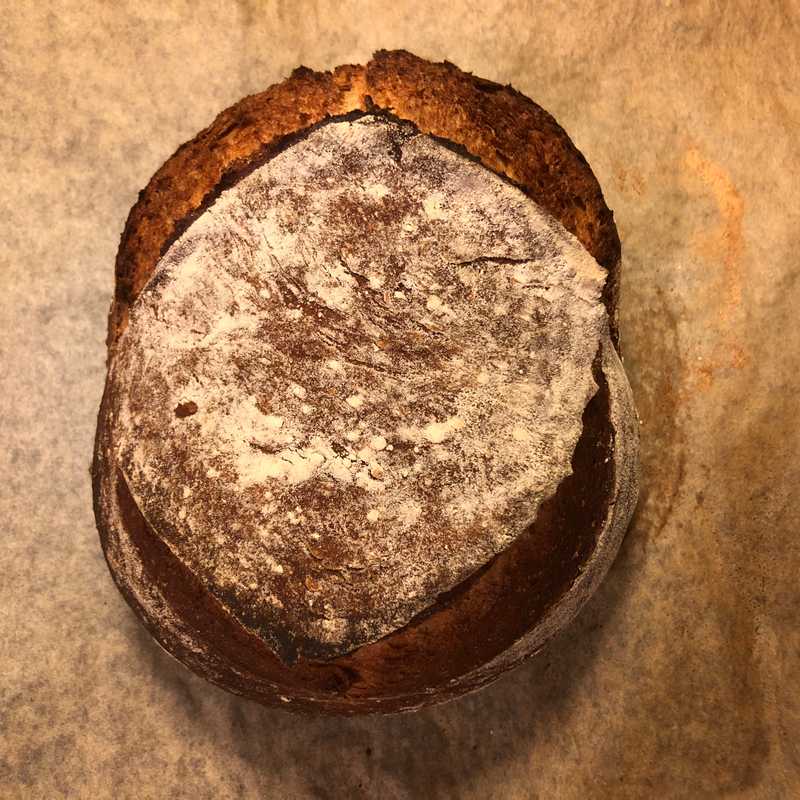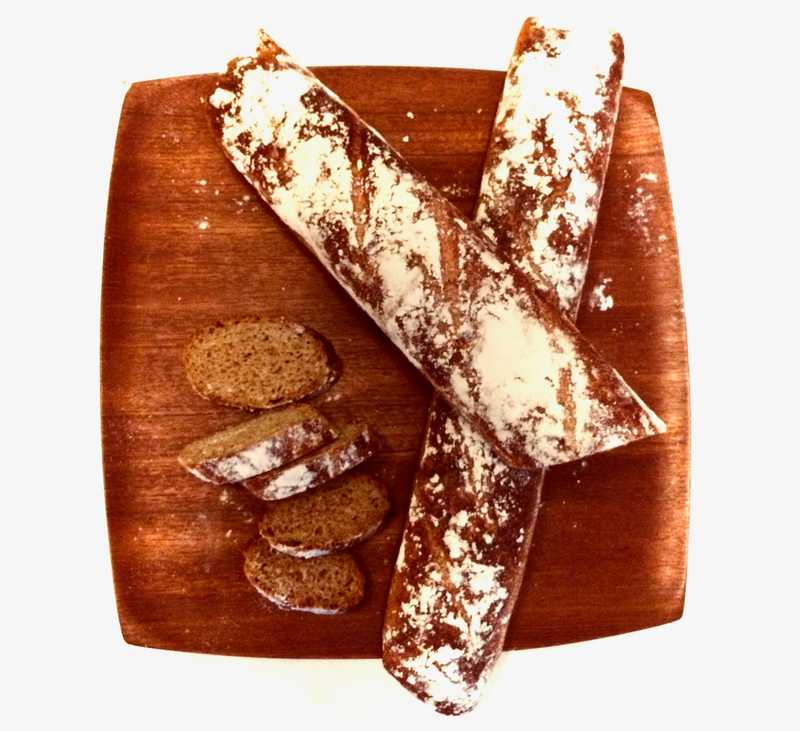My path to bread baking
From deflating doughs to searching for the perfect crumb structure
I started baking wheat breads sometime in the early 2000. Before that I had been mostly baking cakes. I was working mostly with “normal” home baking recipes until I had my 30th birthday party. I got a Kenwood Major Chef as a present and that inspired me to look deeper into bread baking and playing with kneading times and methods.
In the end it was two books that changed my life forever. I found these as e-books as I was playing and testing reading with my new iPad mini at the time.
The first of these was Professional Cooking by Wayne Gisslen
My first few months with the book took me down a rabbit hole of basic cooking lessons that I spent a lot of time on at home. Lots of mice-en-place and knife-work practicing which led to a lot of stocks and sauces. During dinner parties I was mostly stuck in the kitchen because I was always trying to do too much with too little time. Late late dinners were saved only by the ever improving flavours.
Yellow butter cake introduces me to bakers percentages
I had been baking cakes since early adolescence, but not really caring much about the chemistry of things. I finally got to the baking section of the book and tried a very familiar sounding recipe - a basic creamed cake batter - Wayne’s Yellow butter cake. It was good - it still is one my favourites. I was immediately hooked into reading and understanding the chemistry in more detail and I was introduced to bakers percentages, which the engineer and scientist in me immediately loved. There was no going back to ad-hoc recipes and here started my scientific approach to baking both cakes and breads.
Finally I got to the Yeast products chapter and here I got my first feeling on how a kneaded wheat dough develops and into the oh so interesting world of hydration, the role of salt and the role of shorteners(sugars and fats).
“Artisan bread” in Five minutes a Day
The second book that change my bread baking forever was the not so sexily titled Artisan Bread in Five Minutes a Day by Jeff Hertzberg M.D. and Zoë François. This book took the concept of retarding a yeast dough to the maximum and packaged the concept in a great way for anyone to make great bread with minimal labour. The no-knead method that gave tasty wheat bread easily seemed like magic at first and I kept making breads solely with this method for a couple of years. My Kenwood was now only used for cakes and other food preps, but not for kneading. I experimented a lot with the combined knowledge I had about ingredients and started understanding their behaviour better and better.
The retarded dough turns to pâte fermentée
I was keeping my retarded dough in a box in the bottom part of our refrigerator. The temperature there was somewhere between 8-12°C, which made the dough turn sour very fast. I was at first annoyed with this and even threw out some of the too sour doughs, but after a while I started adding new dough on top of the old soured dough and I was unknowingly trying out my first pâte fermentée or old dough method. This mode went on for a couple of years and at some point I started using this method with my Kenwood again.
- Start with a retarded batch as per Artisan Bread in 5
- Do a couple of fresh loaves the next day
- Let the rest of the dough go sour(or old).
- Mix a kneaded old-dough bread, with an improved mix, giving a fast rising but very tasty bread.
- Bake in 250 °C, with steam at first, turning and dropping to 200 °C for the last 10 min until inner temp of bread reaches 97°C.
Now I started feeling like I was making artisan bread for the first time - I started playing with different grains and different types of wheat and different compinations of these. I got into playing with all-grain flours; rye, spelt etc. from our local nearby mill.
My first (successful) sourdough loaf
After all this I am starting to grasp the beauty of the sour dough. I understand now that I have already been playing with sourdoughs without even knowing it. I did actually try to go into the sourdough method a few years ago, but I could not make anything nearly as good as I could with my old-dough method so I gave up on it.
In that way today is a special day, because today we tasted my first wheat bread that did not contain any commercial yeast. My first real artisan sour dough bread.
With this history my sourdough method has become simply as follows:
- Start a batch with only water and flour
- Let the sour dough go sour and become a starter
- Grab a small piece of sour dough starter, feed the started with more wheat and water at the same time
- Mix starter + other ingredients either by hand or with machine
- Bulk ferment slowly in the refrigretator, folding the dough 2-5 times
- Bake in 250 °C, with steam at first, turning and dropping to 200 °C for the last 10 min until inner temp of bread reaches 97°C.
Next steps
- Document my sour dough process and make sure it works by starting from scratch a couple of times.
- Love the stuff being done by Danlarn and Fullproofbaking, will be testing their basic methods soon.

